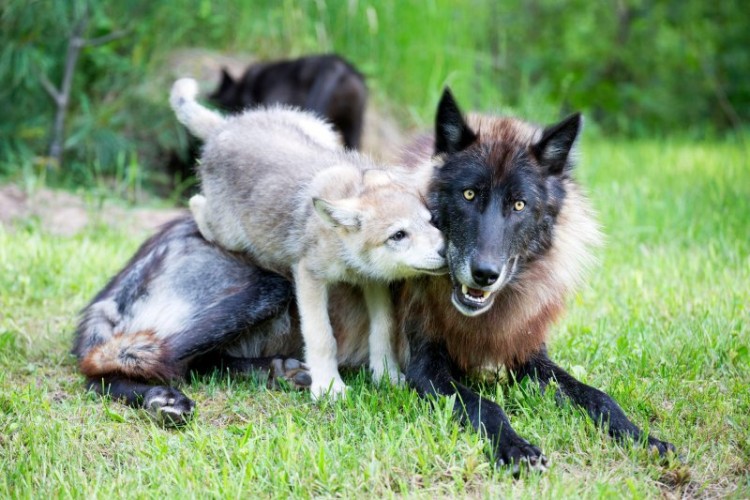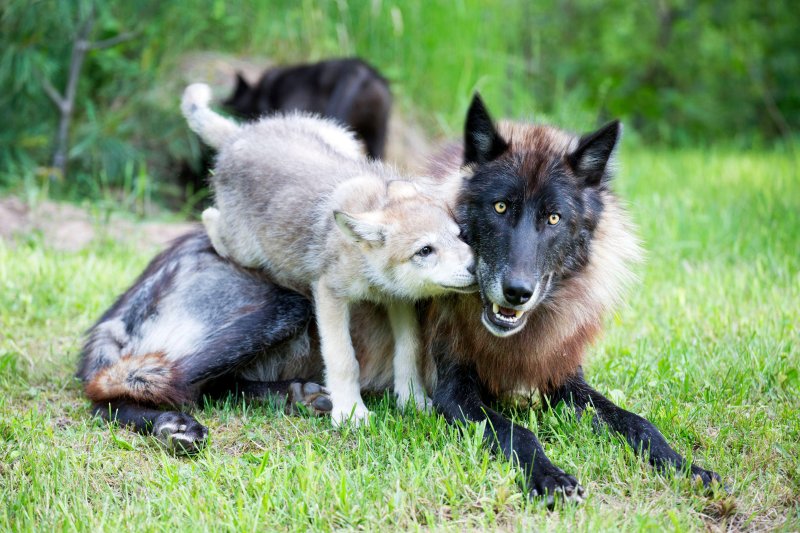
The story of a wolf suckling the abandoned brothers Romulus and Remus at the creation of Rome may be allegorical, but wolves did forever change the human story. Their domestication stands alongside language, fire, and plant cultivation as one of the major innovations that most altered the fortunes of humanity. “It’s hard to see how early herders would have moved and protected and guarded their folks without domestic dogs being in place, and one has to wonder whether agriculture would ever have really made it as a viable alternative to hunting and gathering,” said Peter Rowley-Conwy, a professor of archaeology at Durham University. It’s no exaggeration to say that nearly all human exchange, from early bartering to the on-line transactions in the information age, have necessarily been built on the foundation stones of these developments. The wolf and its descendants have been part of the humane economy longer than any other species.
While many Native American tribes revere wolves, and place them at the center of their creation stories, many other Americans have succumbed to the cartoonish “big bad wolf” narrative and done the opposite. Throughout much of U.S. history, wolves have been ruthlessly persecuted. In his 1880 annual report, Yellowstone National Park Superintendent Philetus Norris wrote that “the value of their [wolves and coyotes] hides and their easy slaughter with strychnine-poisoned carcasses have nearly led to their extermination.” Around the turn of the century, the federal government hired professional hunters and trappers to amass a body count of wolves, and state governments provided bounties on them. By the early ’70s, just after the U.S. Congress enacted a comprehensive Endangered Species Act to protect them and so many other imperiled species, wolves were hanging on only in the northern reaches of Minnesota—and at Isle Royale in Lake Superior.
Increasingly wildlife science is revealing the critical part that wolves play in maintaining robust ecosystems. Aldo Leopold, the father of modern-day wildlife management, renounced his killing of wolves in his classic book, A Sand County Almanac. He came to recognize, even in his days as a young forester, that wolves were anything but pests. They were critical actors in maintaining balance in ecosystems, and he saw the harmful effects of their removal, by predator control programs, in Arizona’s Kaibab National Forest.
In their decades of work at Isle Royale, wildlife biologists John Vucetich and Rolf Peterson have affirmed Leopold’s conclusion beyond all argument by showing how wolves limit the growth of prey populations—strengthening them by culling the weak, sick, or young, and preventing their numbers from expanding to the point where they denude the forest of saplings or strip bare the leaves of trees. Indeed, upon their reintroduction to Yellowstone, wolves immediately went to work reducing the high densities of elk and bison, forcing them to stop overgrazing meadows and riparian areas. These effects are documented in a popular video called “How Wolves Change Rivers,” based on a lecture by journalist and environmental advocate George Monbiot. The video has attracted more than 15 million views on YouTube.
Source: Let’s Ditch the ‘Big, Bad Wolf’ Cliché – The Daily Beast

Comments
yes the big bad wolf is a myth a theory of how they could be conceived…and it came right out of Europe…werewolves wolfman and the vampires…so grow up America little red riding hood lied ….